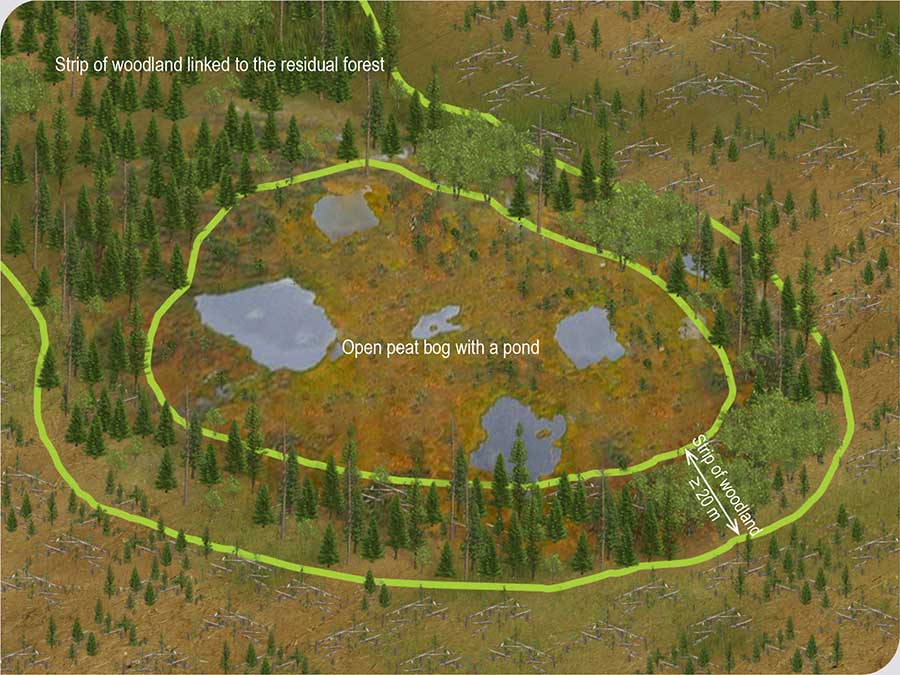Chapter III – Protection of aquatic environments, riparian areas, wetlands and soils
Division II – Open peat bogs (unwooded) with a pond, marshes, riparian shrub swamps, lakes and permanent watercourses
Section 27
A strip of woodland at least 20 m wide must be preserved alongside a peat bog with a pond, a marsh, riparian shrub swamp, lake or permanent watercourse.
The strip of woodland is measured from the limit that separates the stand from the environment to be protected or, in the presence of a riparian ecotone, from the limit of the ecotone farthest from the environment to be protected. ![]() The strip of woodland must be linked to the residual forest.
The strip of woodland must be linked to the residual forest. ![]()
1
Objectives
- To preserve the integrity of an aquatic, wetland or riparian environment
- To contribute to the quality of the experience in the forest
- To avoid carrying sediment into an aquatic, wetland or riparian environment
Additional information
A swamp is said to be riparian when it is adjacent to a lake or watercourse.
When present, the various open environments (open bog with pond, riparian shrub swamp) are part of the stream, lake or marsh ecotone.
Figure 27A Strip of woodland alongside an open peat bog with a pond
Figure 27B Strip of woodland alongside a wetland or aquatic environment
2
Objective
- To allow wildlife to move around by maintaining connectivity between its habitat and the neighbouring residual forest
Explanations
The strip of woodland alongside an open peat bog with a pond, a marsh, a riparian shrub swamp, a lake or a permanent watercourse must be connected to the residual forest. Wildlife uses the strip of woodland as a corridor to travel to other sections of its habitat.
In most cases, strips of woodland that are preserved alongside aquatic and wetland environments or sites to be protected, and between total cutting areas, form a network of corridors that is connected to the residual forest at several locations. However, this is not the case for isolated peat bogs with ponds, and special attention is therefore needed to connect the surrounding strips of woodland to the residual forest.
Figure 27A Strip of woodland alongside an open peat bog with a pond
Figure 27B Strip of woodland alongside a wetland or aquatic environment


